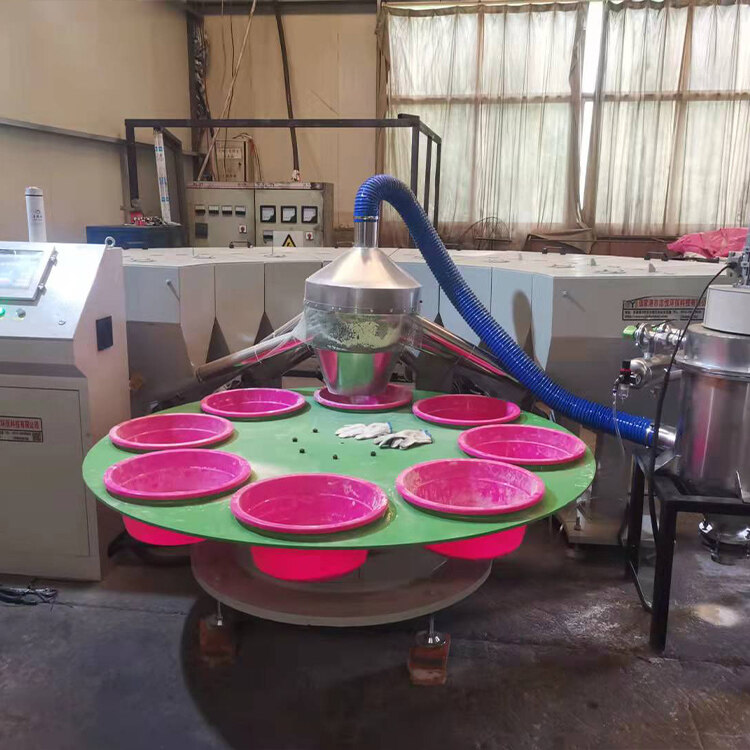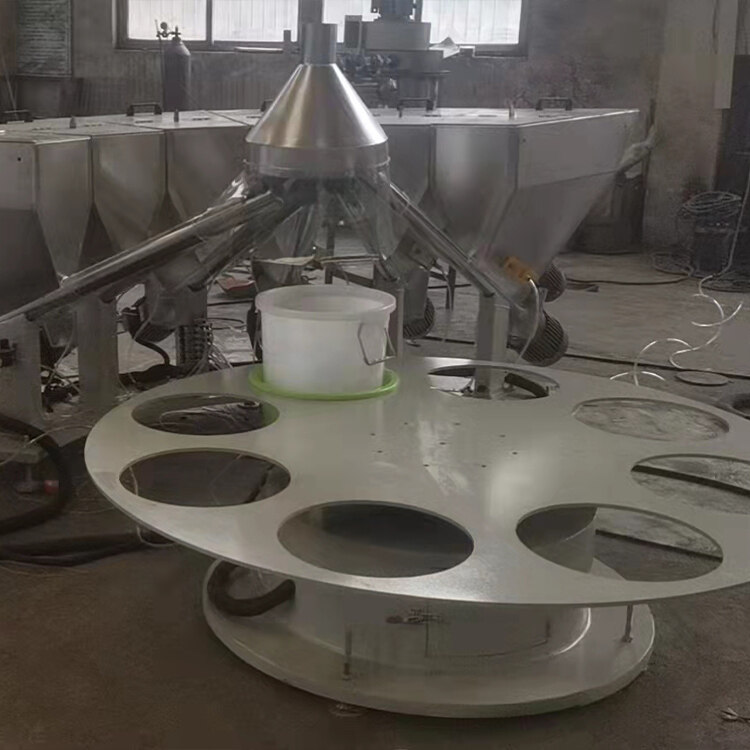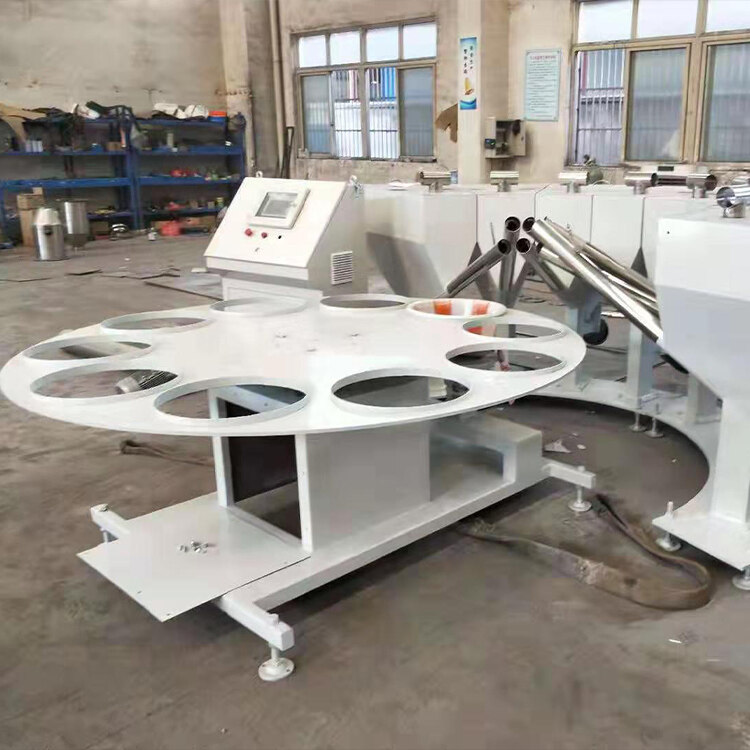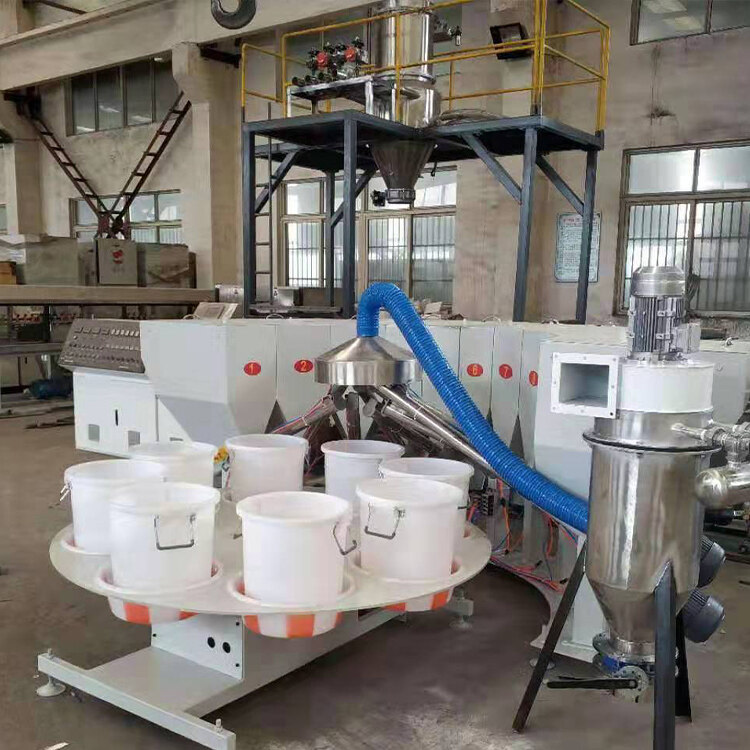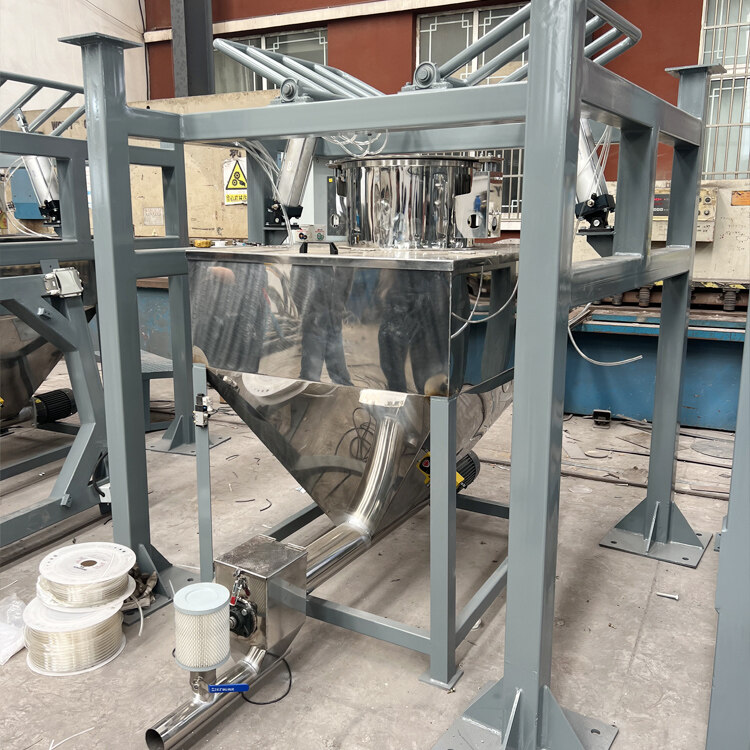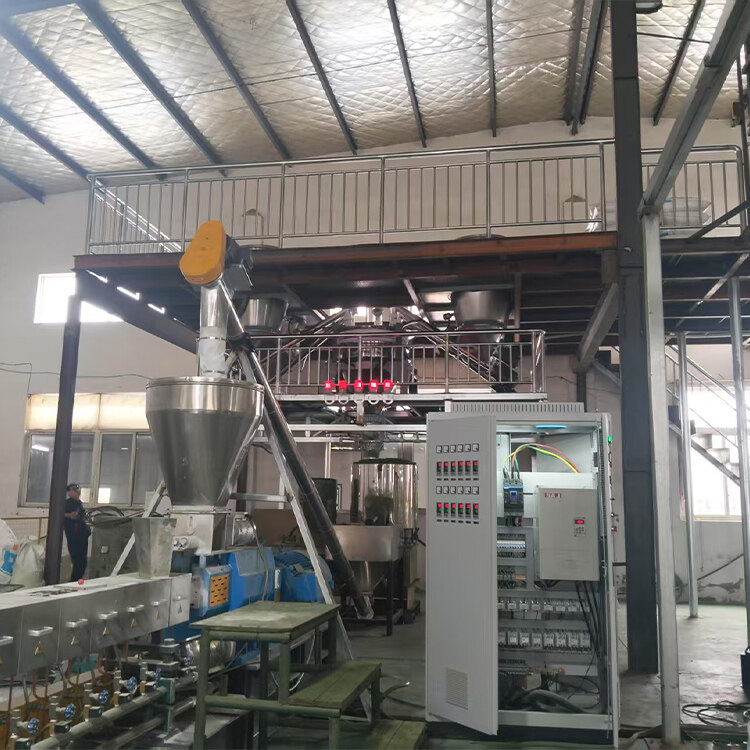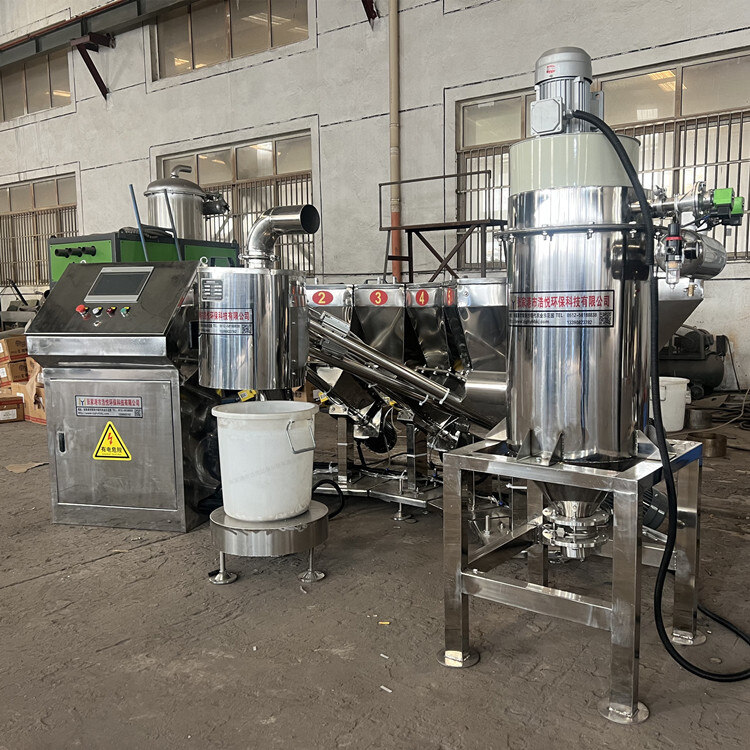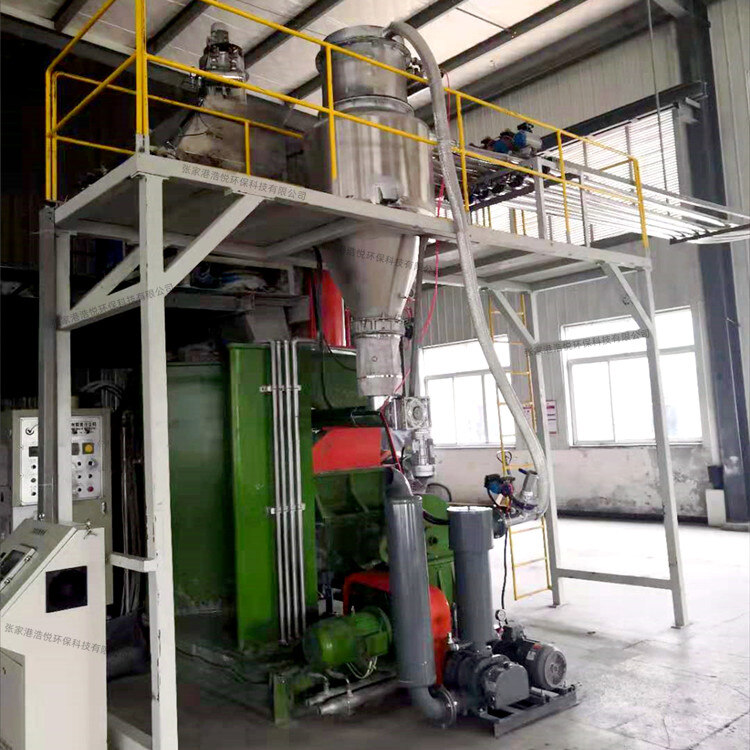- Introduction to automatic batching machine and fully automatic batching machine equipment
- The powder metering system tells you about the introduction of the mixing and drying machine
- 1000kg vacuum feeding machine
- Fully automatic small material batching system
- Research on Innovation of Automatic Weighing Machine Technology
- Design and operation of automatic batching system using PLC, industrial computer and frequency converter
Batching Plant
- Category:Batching Plant
- Hits:190次
- Release Date:2025-06-23
- Share:
- Inquiry
- Details
1、 The core functions and technological advantages of the batching machine
High precision measurement
The batching machine adopts multiple measuring methods to ensure accurate material proportioning. For granular or powdered materials, the commonly used weighing method (with an accuracy of ± 0.1% - ± 1%) monitors the weight of the material in real-time through high-precision weighing sensors, and dynamically adjusts the feeding speed through a PLC control system to achieve dual weighing of "coarse weighing+fine weighing" and avoid errors caused by inertia feeding. Volumetric metering (with an accuracy of about ± 1% - ± 3%) is suitable for materials with good fluidity and stable density. It is transported by fixed volume through components such as screw feeders and rotary valves, with low cost and suitable for large-scale feeding. Liquid material measurement usually uses flow meters or metering pumps, with an accuracy controlled within ± 0.5%, to meet the precise dispensing needs of liquid additives in the chemical and food industries.
Automation and Intelligent Control
The control system with PLC as the core, combined with a touch screen operation interface, supports one click calling of preset formulas (can store hundreds of types), and automatically completes the sequential weighing, mixing, and conveying of multiple materials. The system monitors real-time data from various links, such as material level, measuring weight, conveying speed, etc. In case of abnormalities (such as low material level, blockage, and out of tolerance), it automatically alarms and shuts down. Some high-end models integrate AI algorithms that can adaptively adjust feeding strategies based on material characteristics such as humidity and particle size changes to ensure measurement stability; Simultaneously supporting integration with factory MES and ERP systems to achieve real-time uploading and analysis of production data, optimizing production scheduling.
Multi material collaborative processing
The batching machine can process 8-20 different types of materials simultaneously, avoiding cross contamination of materials through independent storage bins, feeding mechanisms, and metering units. In feed production, precise ratios of corn, soybean meal (large feed), vitamins, and amino acids (small feed) can be achieved simultaneously; In food processing, automated mixing of multiple materials such as flour, sugar, salt, and additives is achieved to meet complex formula requirements.
Safety and Environmental Design
For flammable, explosive, or dusty environments, the equipment adopts explosion-proof motors, anti-static pipelines, and grounding devices. Some models are equipped with fully enclosed structures and pulse bag dust removal systems, with a dust removal efficiency of over 99%, and the workshop dust concentration is controlled within safety standards (such as<10mg/m ³). The parts that come into contact with food or medicine are made of 304/316L stainless steel material, with surface polishing treatment (roughness Ra ≤ 0.8 μ m), in compliance with hygiene standards such as GMP and HACCP, and support CIP (in-situ cleaning) function, reducing manual cleaning costs and cross contamination risks.
2、 System composition and workflow of batching machine
1. Core equipment unit
Storage unit
Composed of multiple independent storage bins, typically made of carbon steel or stainless steel, with a volume customized according to production needs (5-50 cubic meters). The warehouse is designed with a conical bottom, equipped with a vibrator and arch breaking device to prevent material clumping; Top mounted level sensors (anti rotation, radar) monitor inventory in real-time and automatically trigger replenishment warnings when the level is low.
unit of measurement
Weighing module: using strain or capacitive weighing sensors, combined with digital filtering algorithms to eliminate external interference and ensure stable weighing.
Feeding mechanism: Select different methods based on the characteristics of the material, such as screw feeder (powder material), vibrating feeder (granular material), peristaltic pump (viscous liquid), and achieve precise control through variable frequency speed regulation.
Micro metering device: For small dosage additives such as chemical catalysts and food flavorings, equipped with weight loss micro scales or precision screw meters, the minimum metering accuracy can reach gram level.
Conveyor and mixing unit
Conveyor equipment: including screw conveyors, belt conveyors, pneumatic conveying pipelines, etc., which transport the measured materials to the mixer or downstream equipment. Closed pipeline transportation can effectively prevent dust leakage and material pollution.
Mixing equipment: common double screw belt mixers, planetary mixers, etc. The mixing blades are made of wear-resistant materials and operate alternately in forward and reverse directions to ensure a mixing uniformity of over 99%; Some models are equipped with heating/cooling jackets to control the mixing temperature.
control unit
Hardware: PLC controller, touch screen, sensor network (weighing, level, flow sensors) constitute the core control architecture.
Software: Specialized management software supports functions such as formula editing, data recording, and fault diagnosis. It can generate production reports and support hierarchical management of permissions to ensure data security.
2. Workflow
Formula input: The operator imports the preset formula through the touch screen, and the system automatically calculates the ratio and weighing sequence of each material.
Automatic measurement: PLC controls the feeding mechanism of each silo, completes material weighing in the "coarse weighing+fine weighing" mode, compares the target weight with the actual weight in real time, and dynamically adjusts the feeding speed.
Centralized conveying: The measured materials are transferred to the mixer through conveying equipment, or directly conveyed to downstream production equipment (such as injection molding machines, reaction vessels).
Uniform mixing: The mixer runs at the set time and speed to ensure thorough mixing of materials; After mixing is completed, the material enters the next process.
Data recording and monitoring: The system records measurement data and operating parameters throughout the entire process, automatically alarms and generates fault logs in case of abnormalities, facilitating traceability and maintenance.
3、 Typical application scenarios of batching machines
Food industry: precise blending of baking ingredients (flour, sugar, butter), automated mixing of seasonings (salt, spices, additives) to ensure consistent product taste; The design that meets food hygiene standards meets the strict requirements of the industry.
Chemical industry: metering and mixing of resins, flame retardants, and toughening agents in plastic modification, precise ratio of pigments and solvents in coating production, ensuring stable product performance; Explosion proof design is suitable for the production of hazardous chemicals.
Pharmaceutical industry: high-precision weighing of raw materials and excipients in pharmaceutical preparations, stainless steel material and dust-free design that meet GMP standards, prevent cross contamination, and ensure drug quality and safety.
Building materials industry: automatic batching of cement, sand and gravel, and additives in concrete mixing plants, and mixing of multiple materials in dry mortar production to improve the efficiency and standardization of building materials production.
Feed industry: precise mixing of bulk raw materials (corn, soybean meal) and trace additives (vitamins, amino acids) to ensure balanced feed nutrition and improve breeding efficiency.
4、 The technological development trend of batching machines
Intelligent upgrade: Introducing AI algorithms and machine learning technology to achieve autonomous optimization of the system (such as automatic calibration of sensors, prediction of material characteristic changes); Realize remote monitoring, fault warning, and remote debugging of devices through IoT technology.
Green and energy-saving: Developing energy-saving driving devices (such as servo motors), optimizing conveying paths to reduce energy consumption; Using recyclable materials to manufacture equipment and reduce environmental impact.
Modularization and Flexibility: Adopting standardized module design, supporting rapid replacement of measuring units and conveying pipelines, adapting to the needs of multiple varieties and small batch production; Provide customized solutions that are suitable for special materials and process requirements.
As a key equipment in industrial automation, the batching machine is continuously improving production efficiency and quality control level through technological innovation, and will play a more important role in the field of intelligent manufacturing in the future.


